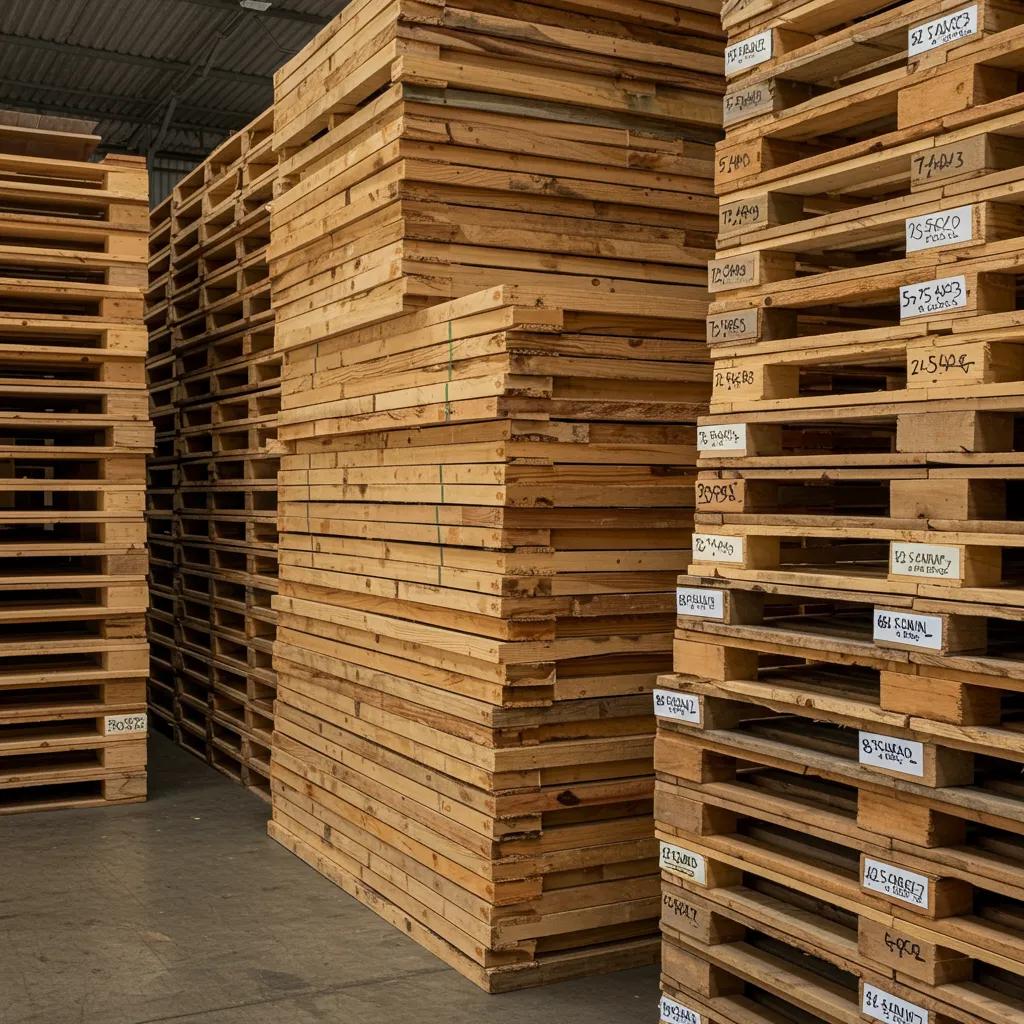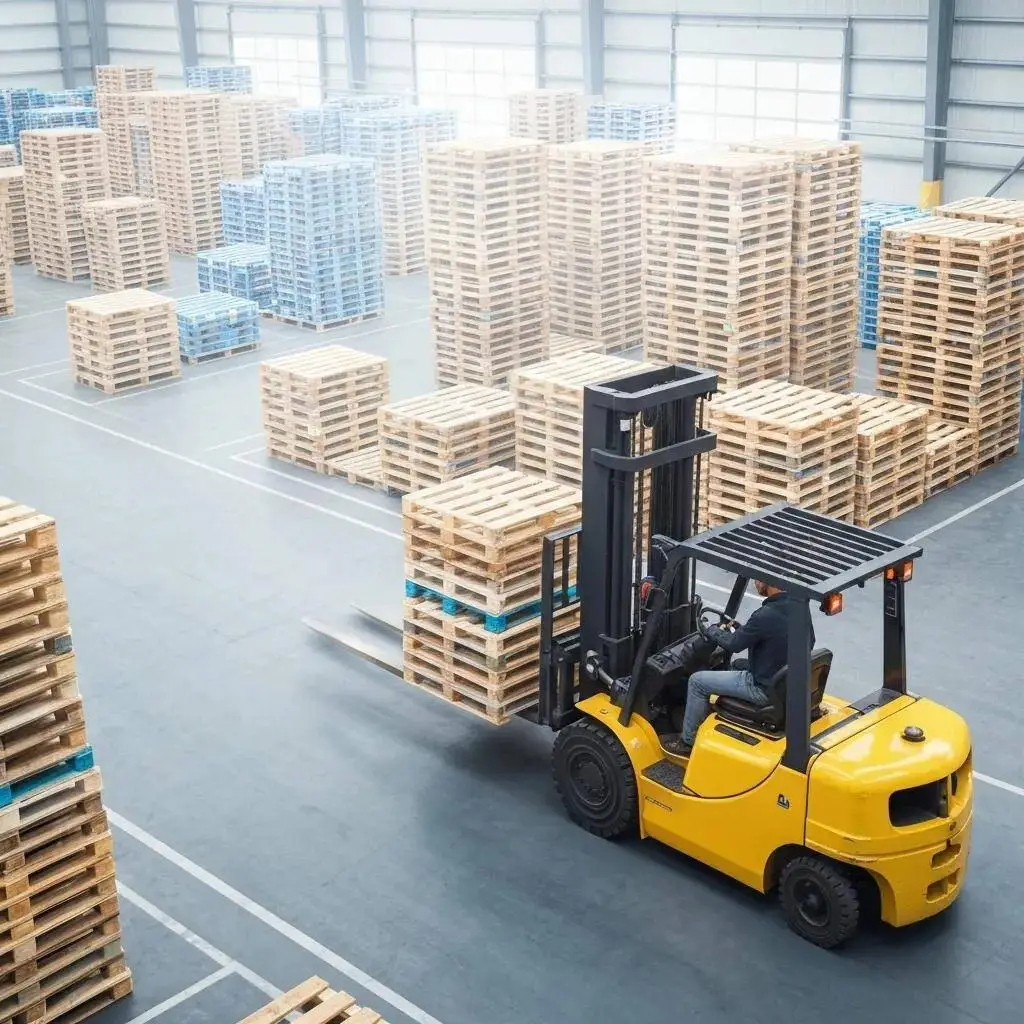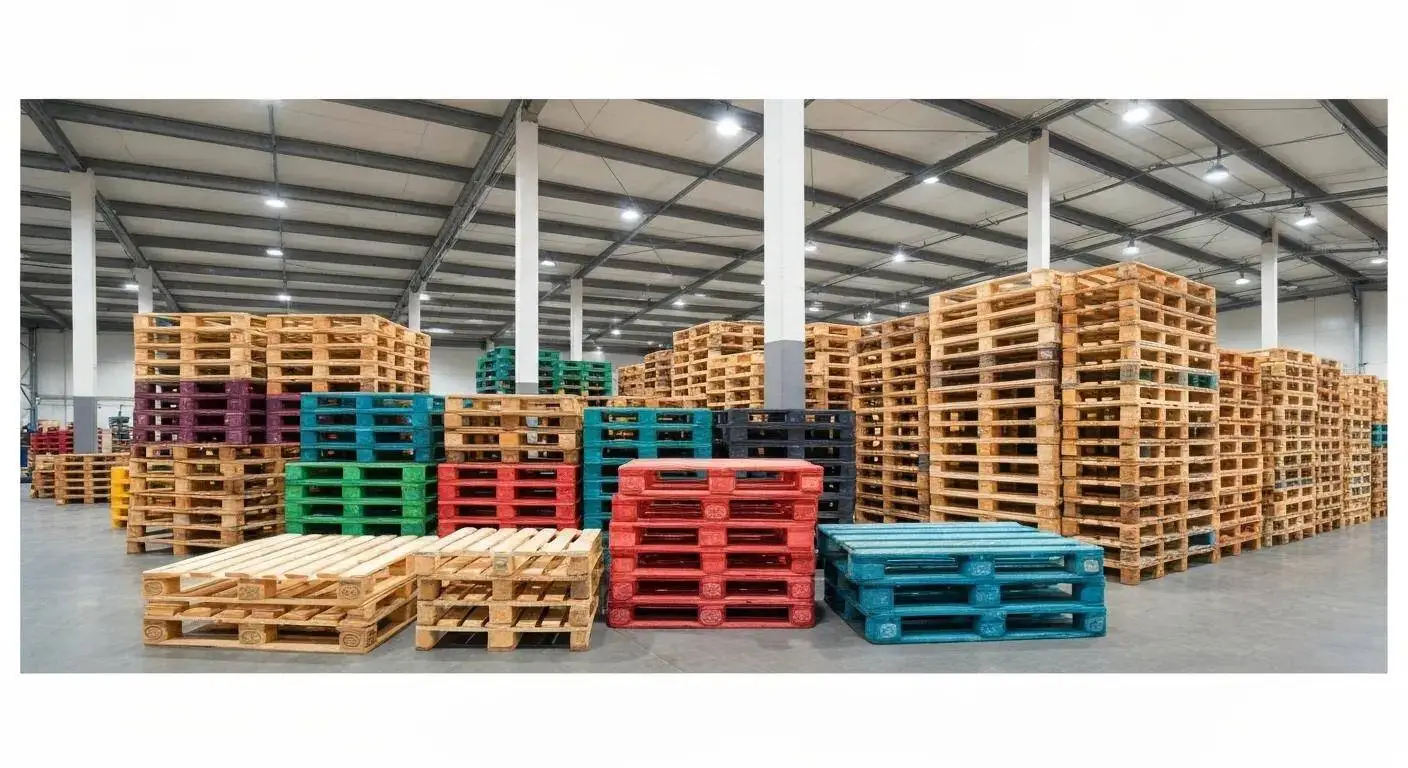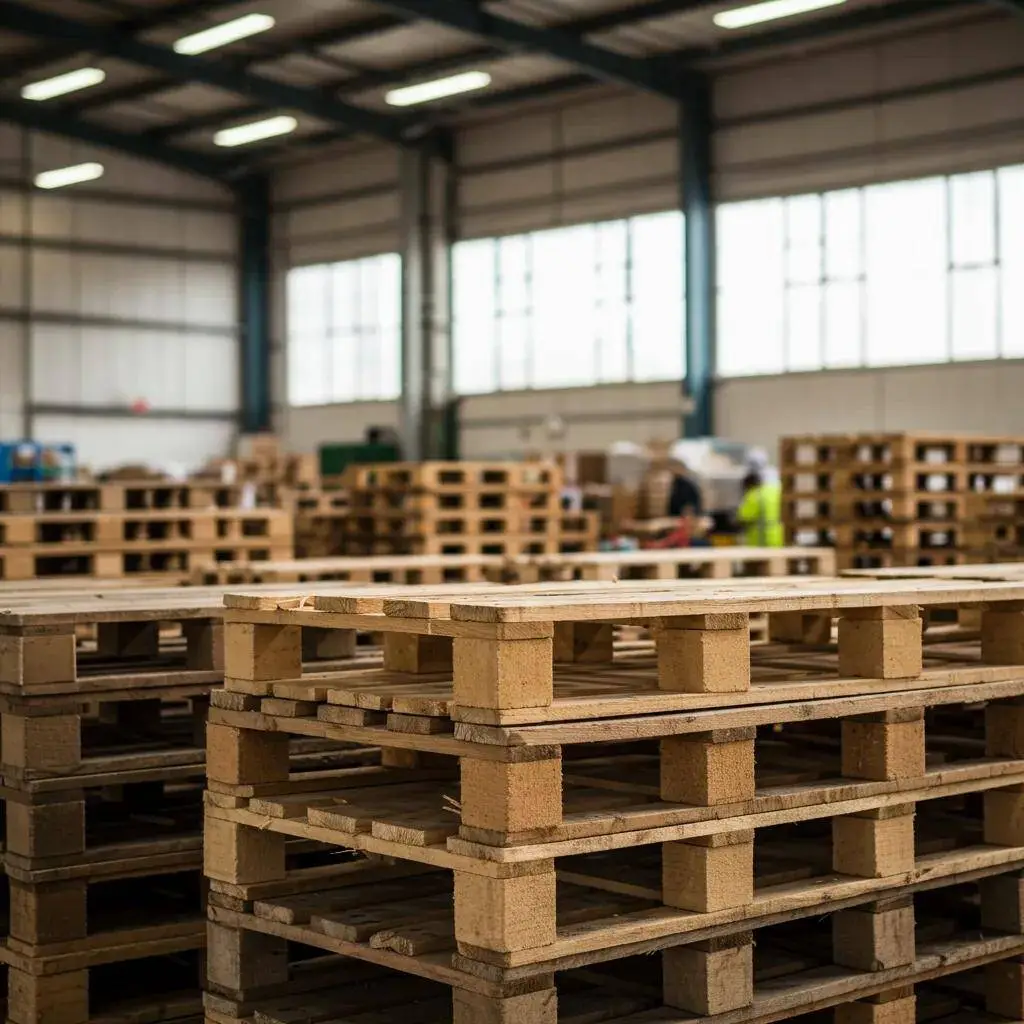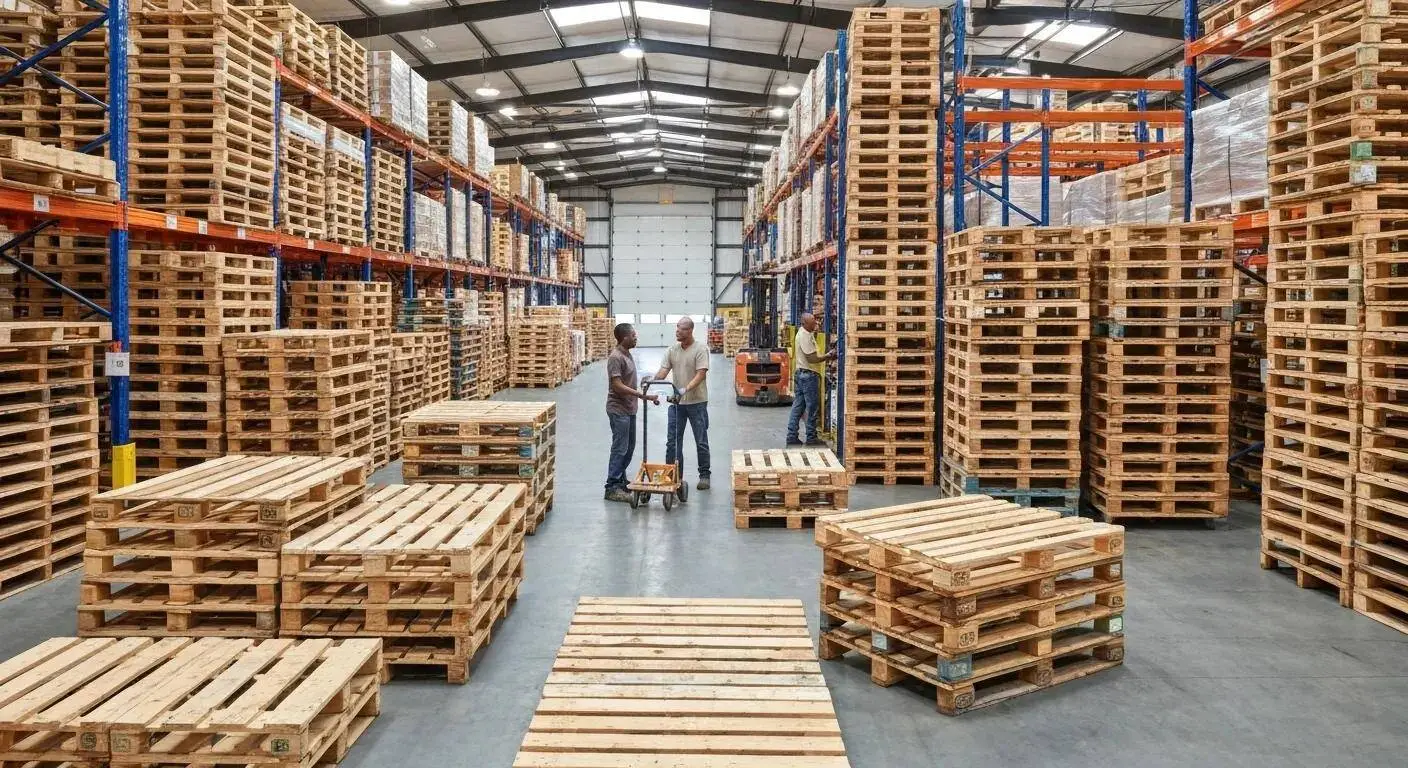Optimize Warehouse Efficiency With Proper Pallet Solutions
In today’s fast-paced supply chain environment, efficient pallet solutions are critical to streamlined warehousing operations. For further assistance with your warehousing strategy, please contact us. High-quality, durable pallets support operational efficiency while also contributing to safety, sustainability, and effective inventory management. This comprehensive guide from WW Pallets explains various pallet types, best practices for stacking and storage, and how innovative technology can optimize your warehouse operations.
Discover Effective Pallet Solutions for Streamlined Warehousing
Effective pallet solutions can significantly improve workflows in busy warehouses. This section explains how to evaluate pallet options, understand weight capacities, and analyze materials so that your facility benefits from an efficient pallet system.
Evaluate the Types of Pallets Suitable for Your Business Needs
Choosing the right pallet type requires understanding your inventory, shipping practices, and handling requirements. Options include standard, custom, or recycled pallets. Heat-treated wooden pallets work well for international shipping, provide long-term durability and superior load distribution in heavy-duty applications. Key characteristics such as moisture resistance, load-bearing capacity, and compliance with shipping standards enable informed decisions that boost productivity.
Assess Weight Capacities and Load Distribution on Pallets
A pallet’s weight capacity is critical. Operators must account for both static and dynamic loads to protect goods and prevent structural damage. For instance, when handling heavy industrial parts, the load must be evenly distributed. Standard pallets supporting up to 4,000 pounds are available, while high-capacity reinforced pallets suit demanding applications. Understanding load distribution helps avoid damage during handling, loading, or transport.
Identify Custom Pallet Designs Tailored to Your Inventory
Warehousing demands are not one-size-fits-all. Custom pallet designs provide solutions that match specific product dimensions, stack heights, and safety requirements. Modifications such as altered deck spacing or integrated cargo securing features can maximize throughput while reducing material waste and labor costs. Partnering with trusted providers like WW Pallets enables bespoke solutions that match unique operational specifications.
Choose Eco-Friendly Pallet Solutions for Sustainable Practices
Sustainability is increasingly important in logistics. Eco-friendly options include recycled wood pallets, pallets made from recycled plastics, and designs meant for extended reuse. These solutions reduce a warehouse’s carbon footprint, support recycling practices, and help comply with sustainability regulations. Embracing green initiatives can also enhance brand image while maintaining operational efficiencies.
Implement RFID Technology in Pallet Tracking for Accuracy
RFID technology significantly improves accuracy and visibility in pallet tracking. RFID tags enable real-time inventory updates, seamless tracking across multiple zones, and instant access to pallet history and condition. This technology minimizes scanning errors, prevents misplaced inventory, and supports better data analytics and decision making.
Implement Best Practices for Pallet Stacking and Storage
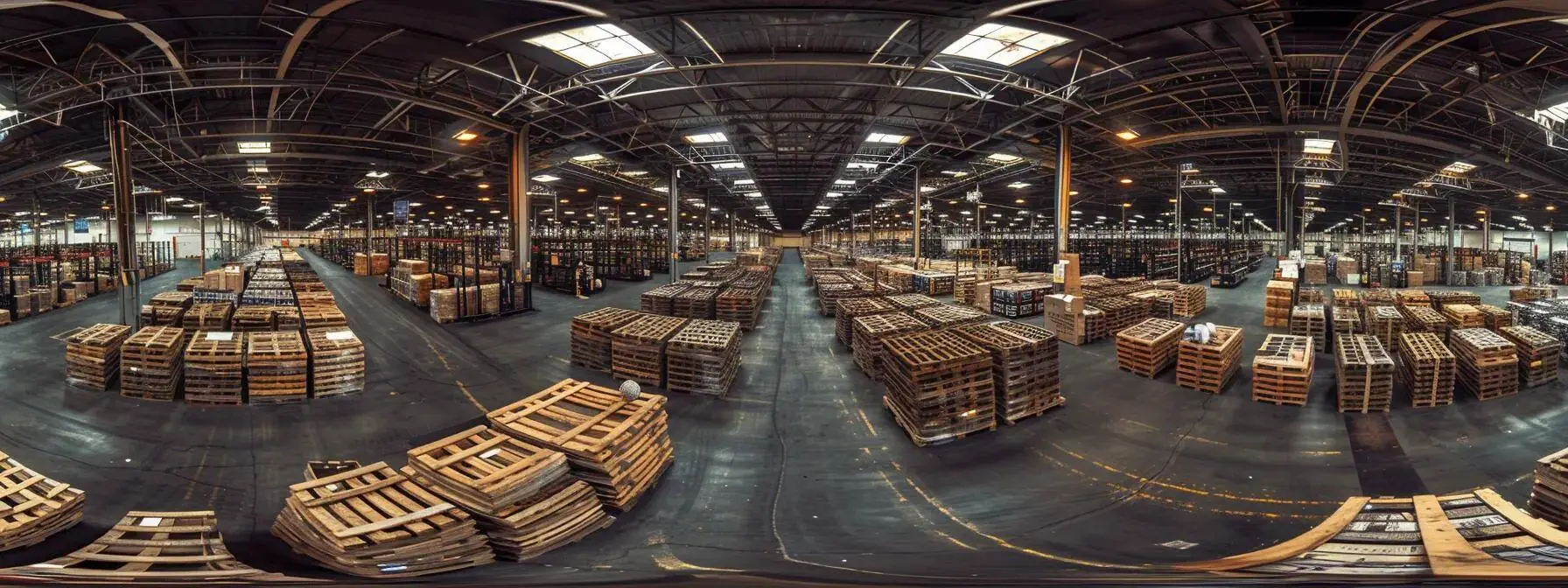
Efficient stacking and storage techniques maximize space while ensuring pallet stability. Following best practices minimizes product damage, improves staff safety, and streamlines inventory flow.
Follow Recommended Stacking Heights for Safety and Stability
Adhering to recommended stacking heights prevents load imbalance and enhances safety compliance. Industry guidelines specify stacking limits based on pallet material, design, and the stored inventory type. These limits help avoid structural failure and keep aisles clear, ensuring safe operations.
Utilize Proper Pallet Wrapping Techniques for Load Preservation
High-quality pallet wrapping secures loads during storage and transit by preventing shifting and protecting against dust and moisture. Techniques such as stretch wrap, shrink wrap, or specialized overwrap materials can accommodate irregularly shaped products. Proper wrapping streamlines labor operations by reducing manual adjustments.
Arrange Pallets for Maximum Accessibility and Navigation
Organizing pallets for easy access enhances workflow efficiency. Effective layout techniques—such as clear pathways, designated high-turnover zones, and positioning within reach of forklifts or pallet jacks—help reduce retrieval times and maintain operational safety. This careful arrangement improves throughput and minimizes delays.
Develop a Systematic Approach to Pallet Inventory Management
A systematic inventory approach tracks the number, size, and condition of pallets, enabling proactive maintenance scheduling. Whether using manual logs or digital systems, clear inventory records support timely decisions and prevent overstock or underutilized assets that disrupt workflow.
Create Zones for Different Pallet Types to Minimize Confusion
Storing different pallet types in dedicated zones enhances organization and reduces handling errors. Segregating pallets by material, size, or use facilitates faster retrieval times and simplifies staff training by providing clear visual cues. Designated zones maintain order and boost productivity.
Train Staff on Safety Measures for Handling Pallets Efficiently
Regular staff training on proper handling techniques improves safety and efficiency. Training should cover lifting, stacking, wrapping procedures, and the use of automated systems. When employees are well-trained, workplace injuries are reduced and operational reliability improves.
Optimize Warehouse Layout for Strategic Pallet Placement
Warehouse layout significantly influences overall productivity. Strategic pallet placement minimizes travel distances for workers, reducing operational friction and labor costs.
Analyze Workflow to Determine Ideal Pallet Locations
Careful workflow analysis identifies the most effective locations for pallet storage. Analyzing factors such as access frequency, product turnover, and proximity to shipping and receiving areas helps pinpoint high-traffic zones where strategic placement can alleviate bottlenecks.
Design Aisles Wide Enough for Safe Pallet Movement
Sufficient aisle width is essential to allow safe navigation of forklifts and pallet jacks. Wide aisles prevent bottlenecks and collisions, protecting products and equipment. A well-planned layout that prioritizes proper aisle dimensions contributes to overall efficiency.
Use Vertical Space to Free Up Floor Area for Operations
Maximizing vertical storage—through high-rise racking systems or mezzanine floors—frees valuable floor space. Using vertical capacity not only increases storage density but also decreases clutter, enhancing safety and material handling.
Position Pallets Near Loading Areas for Quick Access
Locating pallets close to loading and unloading zones accelerates inventory turnover. Proximity to docks minimizes time between storage movement and transit, cutting fulfillment times and enhancing efficiency.
Ensure Clear Signage for Pallet Locations Throughout the Facility
Clear signage throughout the warehouse helps staff quickly locate and retrieve pallets. Labels, directional signs, and color-coded zones reduce confusion, prevent loading errors, and streamline inventory handling.
Regularly Review Layout for Ongoing Improvements and Adjustments
Continuous layout reviews, informed by performance metrics and staff feedback, allow for ongoing improvements. Adjustments to the layout based on changes in inventory, product types, or technology use ensure that the facility remains responsive and efficient.
Incorporate Technology for Enhanced Pallet Management

Modern technology transforms pallet management by modernizing inventory tracking, reducing human errors, and boosting operational efficiency through real-time data.
Implement Warehouse Management Software to Track Pallet Usage
Warehouse management software (WMS) tracks pallet usage, movement, and storage conditions in real time. By integrating with scanning systems, RFID, and barcoding, WMS provides valuable data analytics on turnover and space utilization, reducing misplaced inventory and improving overall efficiency.
Integrate Barcode Systems for Efficient Pallet Identification
Barcode systems remain a reliable solution for identification and tracking. Assigning unique barcodes to each pallet enables rapid scanning and inventory updates, enhances accuracy, and speeds up audits by maintaining real-time visibility into stock levels.
Use Automated Systems for Inventory Management and Restocking
Automated systems, including robotic pallet movers and automated storage and retrieval systems (AS/RS), further streamline inventory management. These systems use sensors and real-time data to manage stock levels, reduce labor costs, and minimize human error, accelerating order fulfillment.
Monitor Pallet Conditions With Sensors for Maintenance Alerts
Sensors integrated with tracking systems monitor stress, moisture, and structural integrity of pallets. Alerts for maintenance needs prevent failures during high-demand periods and support timely repairs, reducing inventory damage.
Evaluate Training Programs for Staff on New Technologies
As new technologies are introduced, thorough training becomes essential. Regular sessions on WMS, barcode scanning, sensor use, and automated equipment ensure staff can efficiently operate these systems, improving overall performance and reducing errors.
Maintain Data Analytics to Review Warehousing Performance
Ongoing data analytics track key performance indicators (KPIs) such as order turnaround, pallet usage, and automation efficiency. These insights help pinpoint trends, bottlenecks, and opportunities for continuous process optimization.
Monitor Performance Metrics to Measure Pallet Efficiency
Regular monitoring of performance metrics is essential to assess the effectiveness of pallet solutions and guide improvements.
Establish Key Performance Indicators Related to Pallet Usage
KPIs like pallet turnover time, cycle counts, and load distribution accuracy enable objective measurement of pallet performance. Setting targets—such as reducing handling time by 15%—provides benchmarks to evaluate improvements.
Review Turnaround Times for Pallet Handling and Storage
Monitoring the time from pallet receipt to dispatch highlights efficiency gaps. Faster turnaround correlates with improved order accuracy and operational flow, aiding decisions on process refinements and automation investments.
Gather Feedback From Staff on Pallet System Functionality
Staff feedback provides practical insights into pallet system performance. Regular surveys and feedback sessions help identify issues like ergonomic challenges or handling risks, allowing adjustments to improve safety and efficiency.
Analyze Cost Savings Achieved Through Improved Pallet Solutions
Cost analyses reveal savings from reduced product damage, lower labor costs, and decreased downtime. Quantifiable improvements, such as a reduction in overhead costs, directly reinforce the benefits of optimized pallet systems.
Regularly Audit Pallet Inventory for Timely Restocking
Systematic audits ensure that pallet inventory remains at optimal levels. These checks evaluate both quantity and condition, preventing disruptions from insufficient or damaged pallets and keeping the supply chain steady.
Use Results to Fine-Tune Pallet Solutions and Warehouse Practices
Data gathered from performance metrics, staff feedback, and cost analyses should be used to make continuous improvements—whether by reconfiguring stacking, investing in new materials, or adjusting warehouse layouts.
Facilitate Continuous Improvement in Pallet Solutions

Continuous improvement is key to keeping warehouse operations efficient. Regular reviews and attention to emerging trends keep pallet solutions at the forefront of industry standards.
Schedule Regular Reviews of Pallet Solutions and Procedures
Establish routine reviews of all pallet-related processes to ensure procedures remain effective and current. These assessments should cover material performance, technological advancements, and staff workflows so that issues are addressed before they disrupt operations.
Foster Open Communication for Improvement Suggestions
A culture of open communication encourages staff to share ideas and provide feedback on pallet handling and storage. Regular team meetings and suggestion channels can lead to innovative solutions and enhanced safety.
Stay Informed on Industry Trends for Pallet Efficiency
Keeping up with industry trends—through publications, conferences, and professional networking—provides insights into new materials, technologies, and best practices. Incorporating these innovations can secure a competitive edge in efficiency and sustainability.
Engage Staff in Training Sessions for Continuous Learning
Continuous training ensures staff are updated on the latest handling techniques and technological tools. This not only improves individual performance but also promotes overall team efficiency and workplace safety.
Explore New Materials and Technologies for Future Growth
Innovation is ongoing in logistics. Testing new pallet materials or advanced tracking systems can drive further efficiency improvements. Experimenting with lightweight, stronger materials or AI-driven inventory solutions can also reduce handling costs and predict potential issues.
Set Long-Term Goals for Pallet Management and Efficiency
Establish long-term objectives to guide continuous improvement. Whether focusing on performance metrics, cost reduction, or a shift toward eco-friendly solutions, clear goals enable incremental progress that boosts overall efficiency and sustainability.
Table: Comparison of Pallet Materials and Their Key Attributes
Before diving into further optimization, consider the following table summarizing key characteristics of different pallet materials:
| Material | Weight Capacity | Durability | Cost Efficiency | Sustainability |
|---|---|---|---|---|
| Wood | Up to 4,000 lbs | Moderate | High | Recyclable |
| Plastic | Up to 3,000 lbs | High | Moderate | Reusable |
| Metal | 4,000+ lbs | Very High | Low | Recyclable |
This table illustrates that wooden pallets are favored for cost efficiency and recyclability, plastic pallets for durability and reusability, and metal pallets for high load capacity. Understanding these attributes helps warehouse managers balance cost, durability, and environmental considerations.
Frequently Asked Questions
Q: What factors should be considered when selecting a pallet type?
A: Consider load capacity, material durability, environmental conditions, and operational requirements such as international shipping standards.
Q: How does proper pallet stacking improve warehouse safety?
A: It maintains load balance, prevents collapse, ensures safe pathways, and reduces product damage during handling.
Q: Can integrating RFID technology really improve inventory accuracy?
A: Yes, it provides real-time tracking and minimizes human error, leading to improved operational efficiency and inventory management.
Q: How often should warehouse layouts be reviewed for pallet placement optimization?
A: Reviews should ideally occur quarterly or biannually to adjust to changing inventory levels and operational demands.
Q: Are automated inventory management systems cost-effective?
A: Absolutely—they streamline restocking, reduce labor costs, and minimize errors, delivering long-term savings.
Q: What benefits do eco-friendly pallet solutions offer?
A: They reduce environmental impact, support sustainability initiatives, and can enhance brand image while performing comparably to traditional options.
Q: How does technology integration influence pallet maintenance?
A: Sensors and automated tracking alert maintenance teams to potential issues before failures occur, ensuring continuous efficiency.
Q: What training should staff receive regarding new pallet technologies?
A: Training should cover warehouse management systems, barcode scanning, sensor data interpretation, and safety protocols for handling advanced equipment.
Final Thoughts
Optimizing warehouse efficiency requires integrating effective pallet selection, strategic layout planning, and advanced technologies. Evaluating the right pallets for your business, continuously monitoring performance metrics, and embracing best practices like RFID tracking ensure operational excellence. Cultivating a culture of continuous improvement—with a focus on data analytics and staff training—provides a robust pathway for sustained success in warehouse operations.


